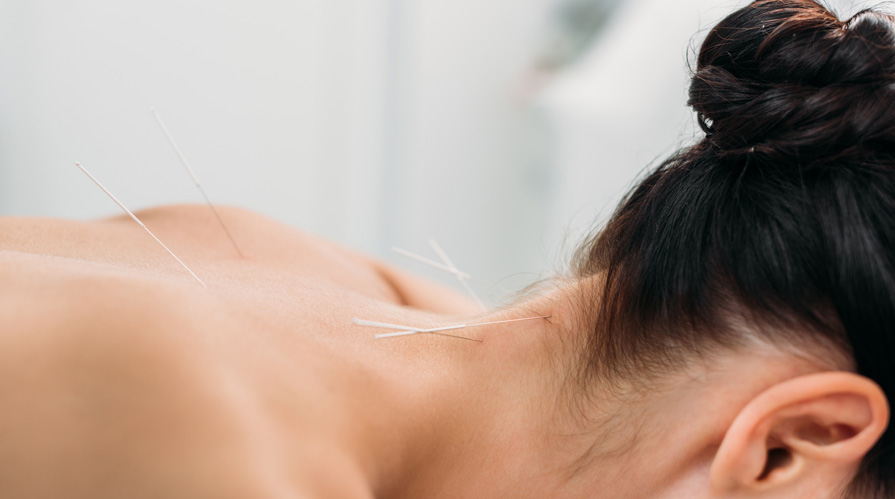
Acupuncture is a form of Chinese medicine that has been shown to to relieve pain and various other medical conditions. It's thought to balance the flow of qi (energy) throughout your body, causing your brain to release feel-good chemicals called endorphins and stimulating your natural ability to heal.
Dry Needling, sometimes called intramuscular stimulation, is a type of treatment for pain and mobility issues that are associated with myofascial trigger points – stiff areas in your connective (fascial) tissue that can restrict your muscle and joint movement. The needles stimulate your muscles, which causes them to twitch, or contract, and can decrease tightness, increase blood flow and reduce pain.
Dry Needling approaches pain relief from a myofascial standpoint, directly addressing the muscles and connective tissue, whereas Acupuncture is more focused on realigning energy and stimulating your body's natural ability to heal.
Cupping is an ancient technique, used in many cultures, in which a special cup is applied to the skin and held in place by suction. The suction draws superficial tissue into the cup, which may either be left in place or moved along the body. Cupping brings fresh blood to the area and helps improve circulation. Traditional cupping, sometimes referred to as "fire cupping," uses heat to create a vacuum-like suction inside of glass cups. In modern times, cups that use a small pump to create suction have also been introduced.
Tui Na means "pushing grasping," and is a powerful form of Chinese medical bodywork. Based on the same Oriental medical principles as acupuncture, tui na seeks to improve the flow of qi through the meridian channels. Tui Na is particularly effective for conditions involving muscles, tendons and joints, such as structural misalignment, orthopedic problems and sports injuries. It can also be used to treat internal diseases.
Moxibustion involves the heating of acupuncture points with smoldering mugwort herb (known as Moxa). Moxibustion stimulates circulation, counteracts cold and dampness in the body, and promotes the smooth flow of blood and qi. This safe, non-invasive technique may be used alone, but it is generally used in conjunction with acupuncture treatment.
Chinese herbs are often used in conjunction with acupuncture for added therapeutic effect. While many cultures have herbal medicine traditions, the sophistication of Chinese herbal medicine is unsurpassed. Chinese herbal medicine has a long history reaching back several thousand years, and the resulting system is now used to treat everything from the common cold to symptoms associated with cancer.
There are thousands of herbs in the Chinese materia medica, of which about 300 are commonly used. You will generally receive a mixture of several different herbs in a formula that has been tailored to your condition. Chinese herbs are extremely effective and normally have only mild side effects, however it is very important to tell me about all the medications and supplements you are currently taking so that we can avoid any unwanted interactions with your formula.
The term "holism" refers to the theory that all parts of a whole are intimately interconnected. According to holism (from the Greek "holo," meaning "whole"), it’s a mistake to study just one part, or even multiple parts separately, if we really want to understand how they work together. Applied to health, holism means treating the whole person – taking into account more than just the physical symptoms of disease or injury.
Holistic health practitioners may ask themselves and their patients to deeply consider the ways that bodies, minds, spirits, relationships, and the spaces we inhabit all coalesce – manifesting and shaping one’s health outcomes and well-being.
Areas that holistic health practitioners may examine include the following: